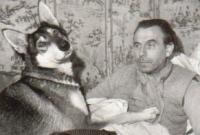1















| Thumbs Up |
| Received: 3,665 Given: 619 |

Chapter I REMARKS ON THE TERM 'RACE,' ON THE DETERMINATION OF FIVE EUROPEAN RACES, AND ON SKULL MEASUREMENT
Chapter II THE BODILY CHARACTERISTICS OF THE EUROPEAN RACES
Part One: The Nordic Race
Part Two: The Mediterranean Race
Part Three: The Dinaric Race
Part Four: The Alpine Race
Part Five: The East Baltic Race
Chapter III THE MENTAL CHARACTERISTICS OF THE EUROPEAN RACES
Chapter IV RACIAL STRAINS FROM OUTSIDE EUROPE
Part One: Negroid, Hither Asiatic
Part Two: The Jews
Chapter V ENVIRONMENT, INHERITANCE, RACIAL MIXTURE
Chapter VI THE DISTRIBUTION OF THE EUROPEAN RACES IN EUROPE
Part One: Britain, France, Belgium, Germany
Part Two: Spain, Portugal, Italy, north Balkans
Part Three: Scandinavia
Part Four: Eastern Europe, Russia
Distribution Maps
Chapter VII THE EUROPEAN RACES IN PREHISTORY
Chapter VIII THE NORDIC RACE IN PREHISTORY AND IN HISTORY
Part One: Indo-European Migrations
Part Two: The Hellenes
Part Three: The Romans
Chapter IX THE DENORDIZATION OF THE PEOPLES OF ROMANCE SPEECH
Part One: Germany
Part Two: Spain, Italy
Part Three: France
Chapter X THE DENORDIZATION OF THE PEOPLES OF GERMANIC SPEECH
Chapter XI THE PRESENT DAY FROM THE RACIAL POINT OF VIEW
Chapter XII THE NORDIC IDEAL - A RESULT OF THE ANTHROPOLOGICAL VIEW OF HISTORY
Forword to the sixth german edition.
I Hope that the re-appearance of this work after almost thirty years, may help the younger generation to give more attention to the religious history of the whole of the Indo-European area, in contrast to previous generations, for a better knowledge of the Indo-European world will lead the West (to which North America belongs), towards selfrealisation. Heraclitus, as Aristotle reported (Concerning the Parts of Animals, I, 5, 645), instructed strangers visiting him, who hesitated on his threshold, to draw closer to him with the words: “Enter, for here the Gods also dwell!” May this work, in its present edition, express a similar invitation.
If, in our era of the “Decline of the West”, the last remnants of the Western Indo-European peoples are submerged due to the dearth of true-blooded Nordics, then nevertheless the last few survivors will retain that same Indo-European conviction which supported and inspired the “last Romans” (Romanorum ultimi), who witnessed the conversion of the aristocratic Roman republic into the “de-Romanised” empire — the proud belief in inflexible and unyielding courage before destiny, which will be portrayed in this work as characteristically Indo-European, and above all Nordic — an ideal which Horace also described in the words:
Quocirca vivite fortes,
Fortiaque adversis opponite pectora rebus!
(Sermones, II, 2, 135/36)
There are currently 1 users browsing this thread. (0 members and 1 guests)
 Heathenry
Heathenry
Bookmarks